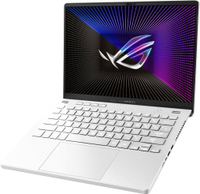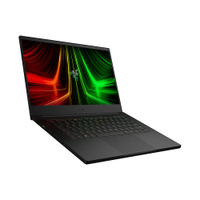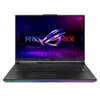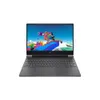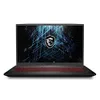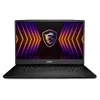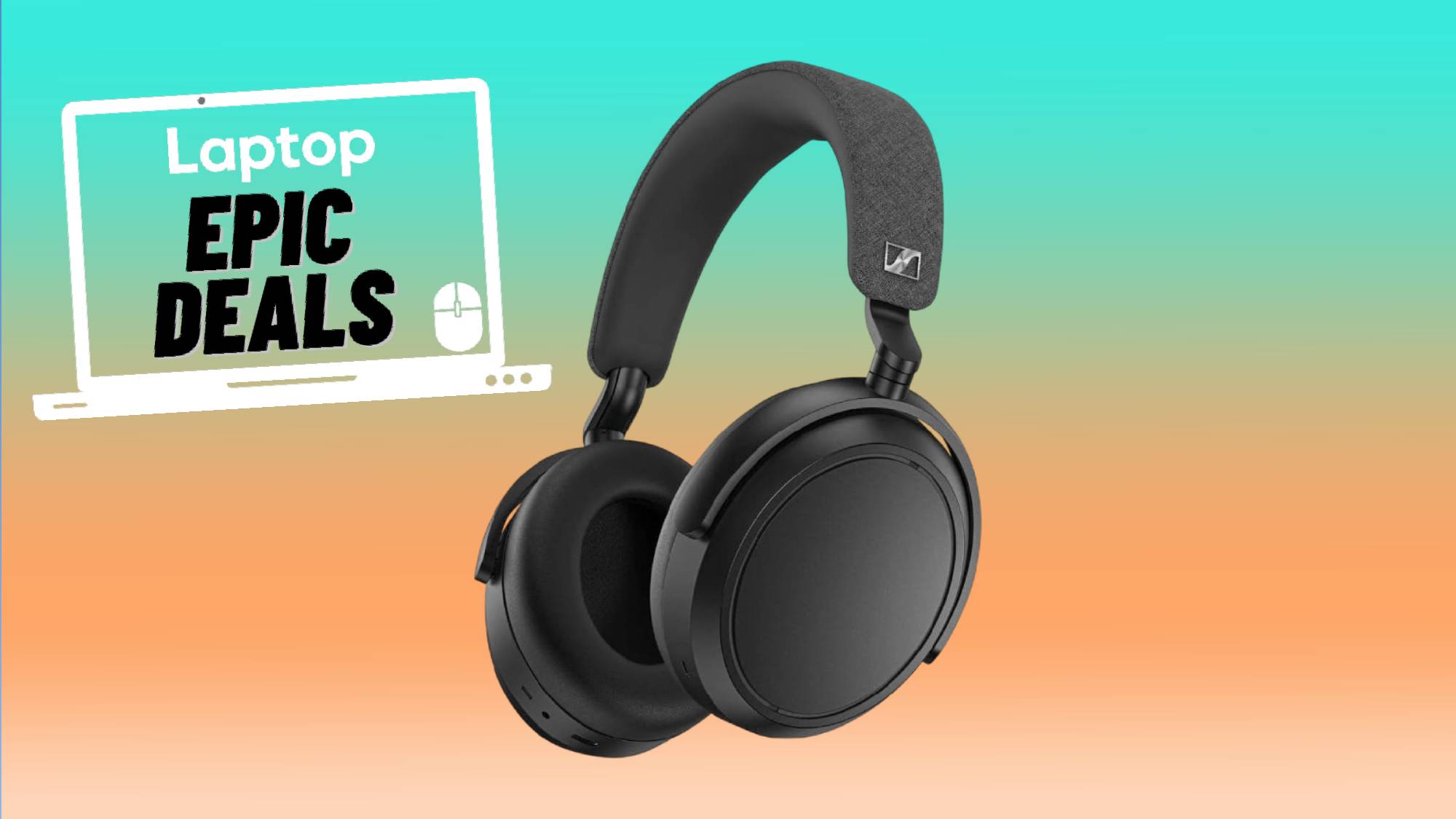Asus Zephyrus G14 vs. Razer Blade 14: Which ultraportable gaming laptop is right for you?
The Zephyrus G14 vs. Blade 14 are the lightest and brightest in their field — here's what you should take home

It's not difficult to identify the most powerful gaming laptops, but it proves a challenge to locate a gaming laptop that maintains its performance in a small body and even boasts a solid battery life. You're looking for a needle in a haystack. It just so happens we have two needles—the Asus Zephyrus G14 (2024) and Razer Blade 14.
These are what I like to call ultraportable gaming laptops — machines that you can carry with you anywhere and are as useful at gaming as they are handling daily tasks from work to school. If you're looking for an all-in-one package, this is the kind of gaming laptop you need to be on the lookout for.
Unfortunately, the smaller these laptops get, the more expensive they become, so price will be a massive factor in deciding whether the Zephyrus G14 or Blade 14 suits you. But does the disparity justify the price difference? Let's jump in.
Pros: Sleek, compact design; Stunning OLED display; Springy keyboard; Strong CPU performance; Long battery life
Cons: Touchpad is still not good enough; Middling graphics; Runs hot
See our full Asus Zephyrus G14 (2024) review.
Razer Blade 14 | ★★★★½ Editor's Choice
Pros: RTX 4070 performance; Gorgeous display; Sturdy aluminum build; Impactful speakers; Excellent battery life
Cons: Runs a bit hot; Loud while gaming
See our full Razer Blade 14 review.
Asus Zephyrus G14 vs. Razer Blade 14: Specs compared
| Model | Asus Zephyrus G14 | Razer Blade 14 |
|---|---|---|
| Price | $1,599 | $2,699 |
| CPU | AMD Ryzen 9 8945HS | AMD Ryzen 9 7940HS |
| RAM | 16GB | 16GB |
| Graphics | Nvidia GeForce RTX 4060 8GB | Nvidia GeForce RTX 4070 8GB |
| Display | 14-inch, 2880 x 1800, 120Hz OLED | 14-inch QHD+ 240Hz, 2560 x 1600 |
| Weight | 3.3 pounds | 4.1 pounds |
| Dimensions | 12.3 x 8.7 x 0.6 inches | 12.23 x 8.97 x 0.7 inches |
Asus Zephyrus G14 vs. Razer Blade 14: Price
Gaming laptops prioritizing thin and light designs will be pricey (over $1,500) but not nearly as expensive as 18-inch, RTX 4090 monsters ($3K~5K). Let's run down what we're working with here.
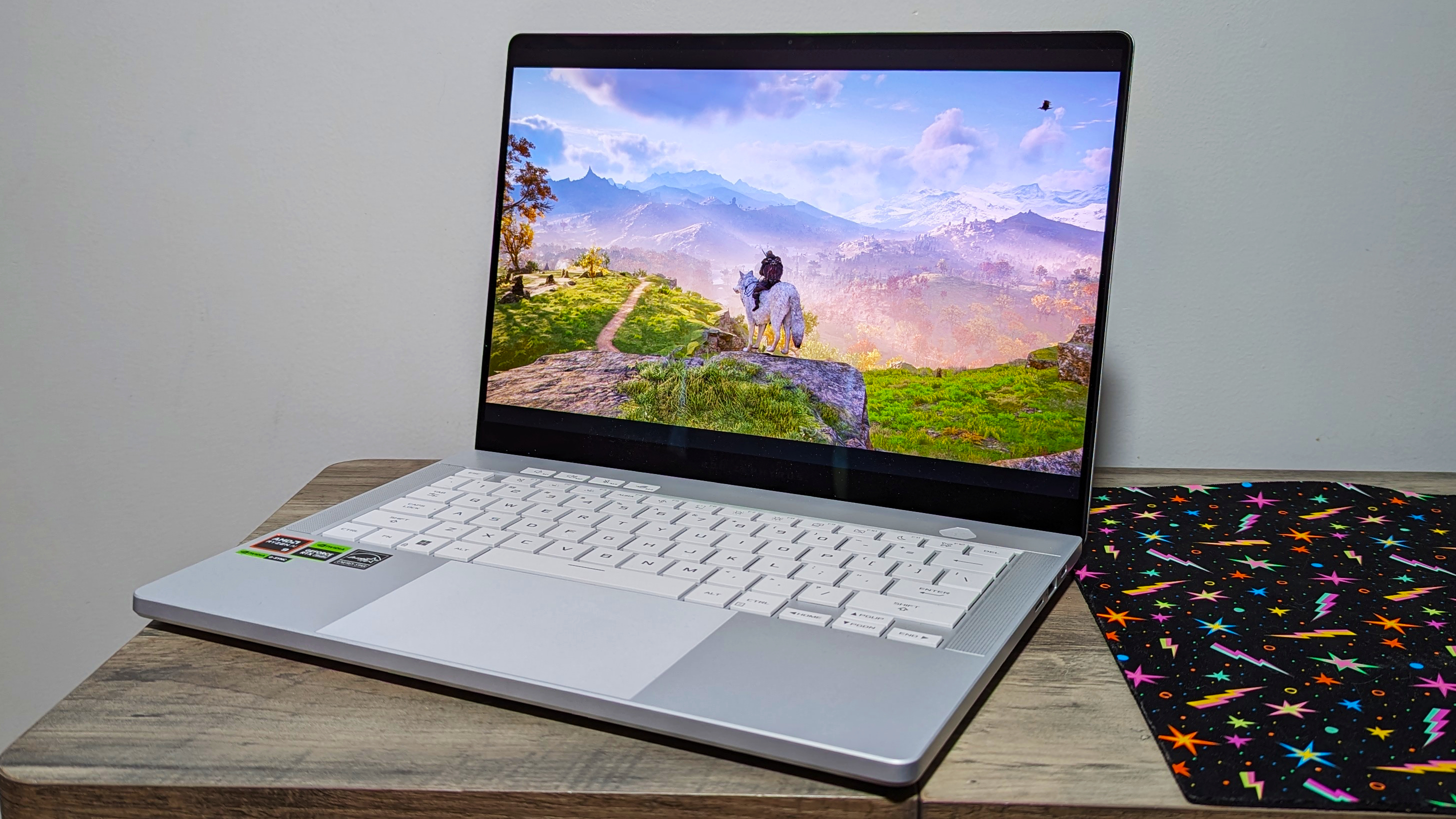
For $1,599, the Asus Zephyrus G14 offers an AMD Ryzen 9 8945HS processor, Nvidia GeForce RTX 4060 8GB GPU, 16GB of RAM, a 1TB SSD, and a 14-inch, 2880 x 1800, 120Hz OLED display.
For $2,699, the Razer Blade 14 features an AMD Ryzen 9 7940HS processor, an Nvidia GeForce RTX 4070 GPU with 8GB of VRAM, 16GB of RAM, 1TB of M.2 PCIe SSD storage space, and a 14-inch QHD+ 240Hz, 2560 x 1600 display.
The Razer Blade 14 offers a stronger GPU, but if you want to even the playing field, you can get the Zephyrus G14 with an RTX 4070 for $1,999.
Get The Snapshot, our free newsletter on the future of computing
Sign up to receive The Snapshot, a free special dispatch from Laptop Mag, in your inbox.
Regardless of how you configure these two, the Asus Zephyrus G14 will be more affordable. The Razer tax, much like the Apple tax, is quite real—a term we use to describe overpriced luxury items.
Winner: Asus Zephyrus G14
Asus Zephyrus G14 vs. Razer Blade 14: Design
Gaming laptop designs can get loud or boring, but neither the Asus Zephyrus G14 nor Razer Blade 14 check those boxes. The overall aesthetic comes down to taste, but when you add the numbers, there's only one objective winner.
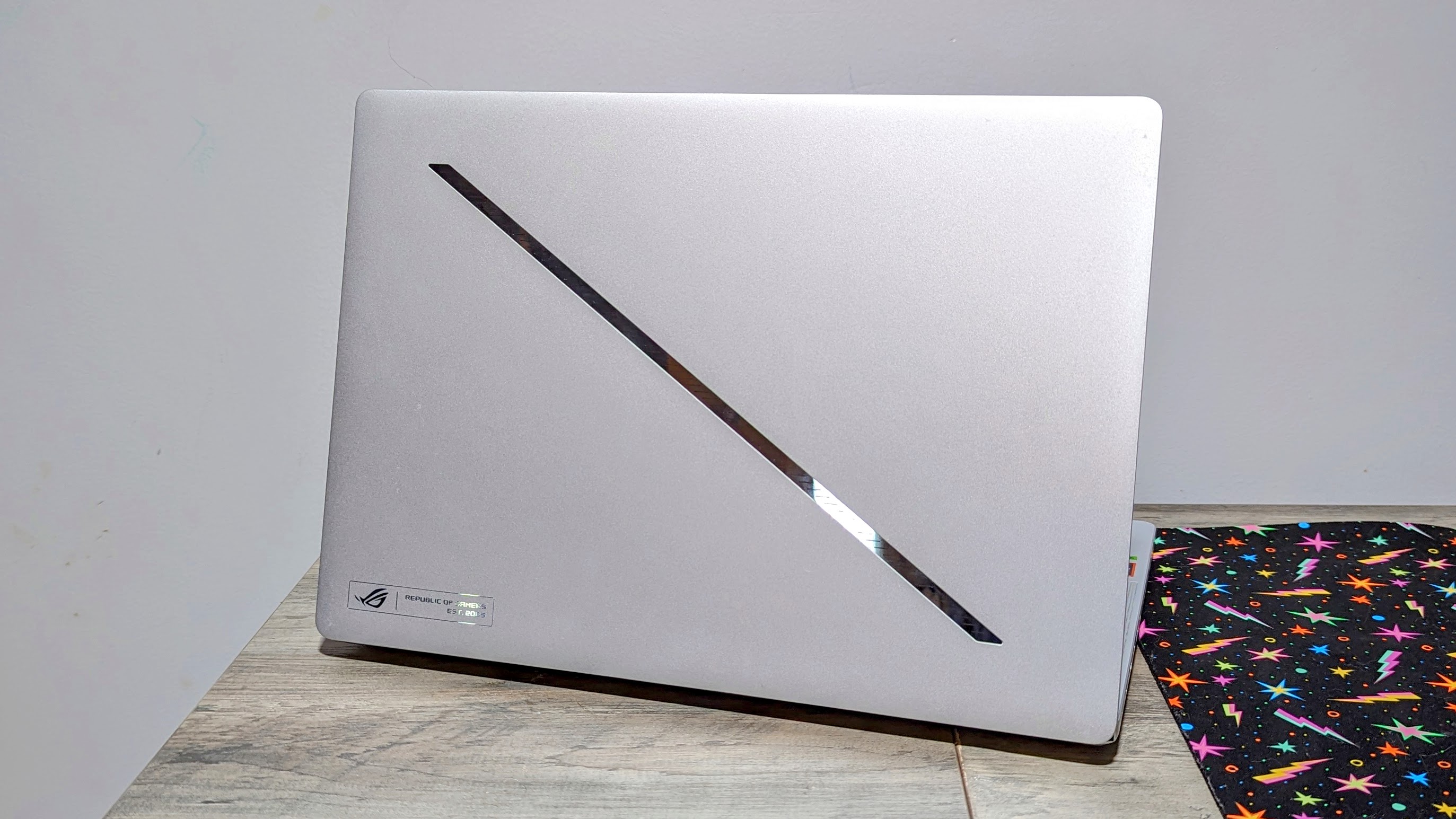
A stunning platinum white skin wraps around the Zephyrus G14, contrasted by a glossy silver slash on its lid with LED slits resembling a razor. Meanwhile, a sleek black metal coats the Blade 14, but it's slightly degraded by the gaudy green Razer logo stamped on the lid. There are models of the Blade with a subtle black or white logo that I much prefer.
The Asus ROG Zephyrus G14 weighs 3.3 pounds and measures 12.3 x 8.7 x 0.6 inches, while the Razer Blade 14 weighs 4.1 pounds and measures 12.2 x 9 x 0.7 inches.
With the super-compact Zephyrus G14, the Razer didn't stand a chance.
Winner: Asus Zephyrus G14
Asus Zephyrus G14 vs. Razer Blade 14: Display
I love a pretty display, and there's nothing more important in a gaming laptop (apart from the GPU) than a shiny screen. The Asus Zephyrus G14 is rocking a 14-inch, 2880 x 1800, 120Hz OLED panel, while the Razer Blade 14 offers a 14-inch, 2560 x 1600, 240Hz matte display.
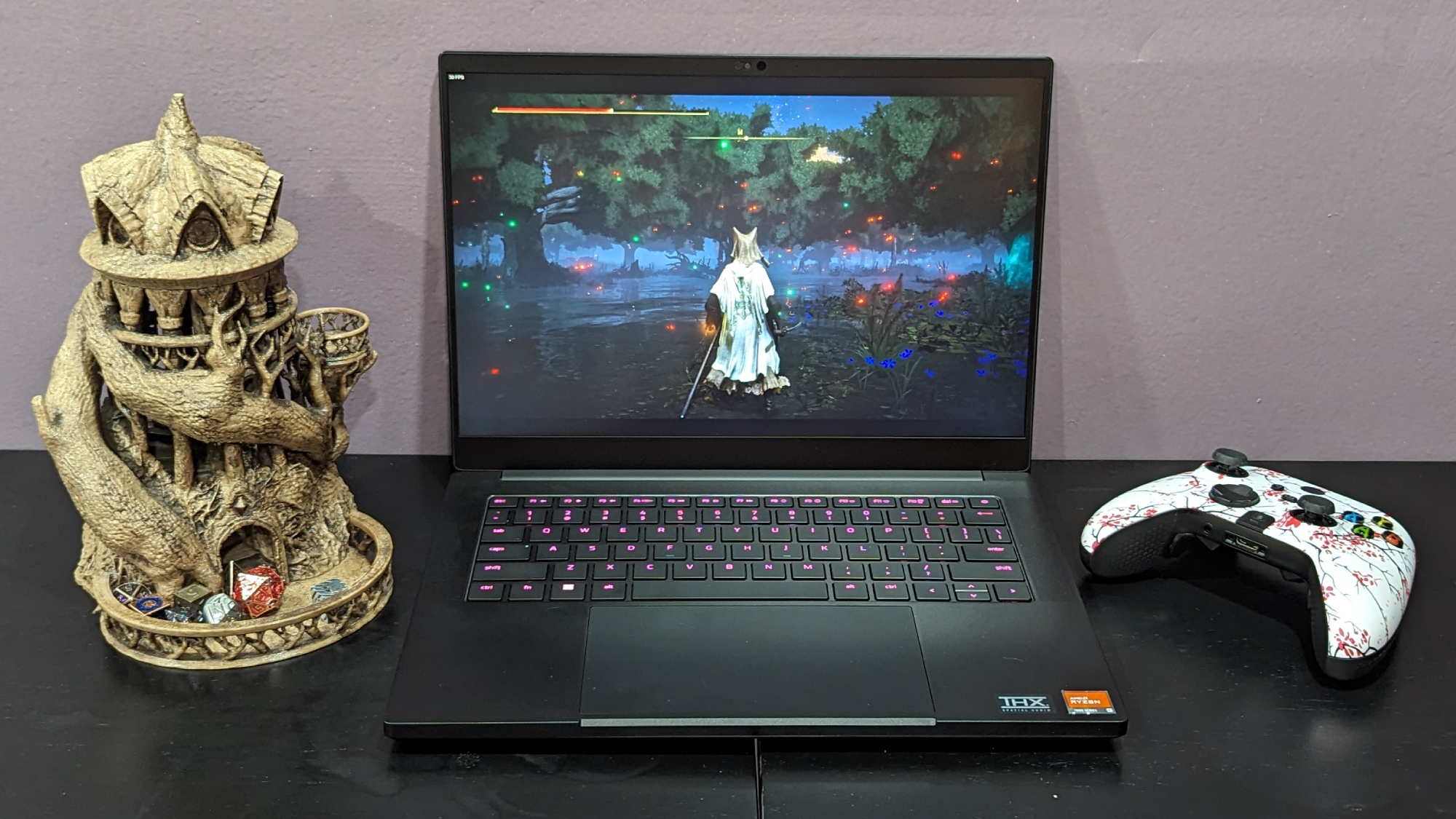
Before we discuss benchmarks, let's look at the specs. The Zephyrus G14 offers a sharper image, while the Razer Blade 14 provides smoother visuals. What's more important to you?
Once that's decided, think about what you're using your screen for. Are you in well-lit spaces and like to play competitive games? Or do you play in darker spaces and enjoy immersive RPGs? If it's the former, I'd go with the Razer Blade 14 because its matte panel offers less glare and a high refresh rate. If it's the latter, I'd choose the Zephyrus G14 due to its OLED panel, which feels like looking through a window instead of a screen.
Okay, what about benchmarks? The Zephyrus G14 covered 85.2% of the DCI-P3 color gamut and averaged 387 nits of brightness. The Blade 14 covered 114.3% of the DCI-P3 color gamut and averaged 465 nits of brightness.
This is a tough choice. Usually, I'd opt for the OLED display. However, the color and brightness difference between the two is a wide gap. If the G14 pushed closer to 100% DCI-P3, I may have gone with that, but I'm going with the Blade 14.
Winner: Razer Blade 14
Asus Zephyrus G14 vs. Razer Blade 14: Audio
We normally don't dive into the Audio sections in a face-off, but the differences between the Asus Zephyrus G14 and Razer Blade 14 sound systems are stark enough to make an exception.
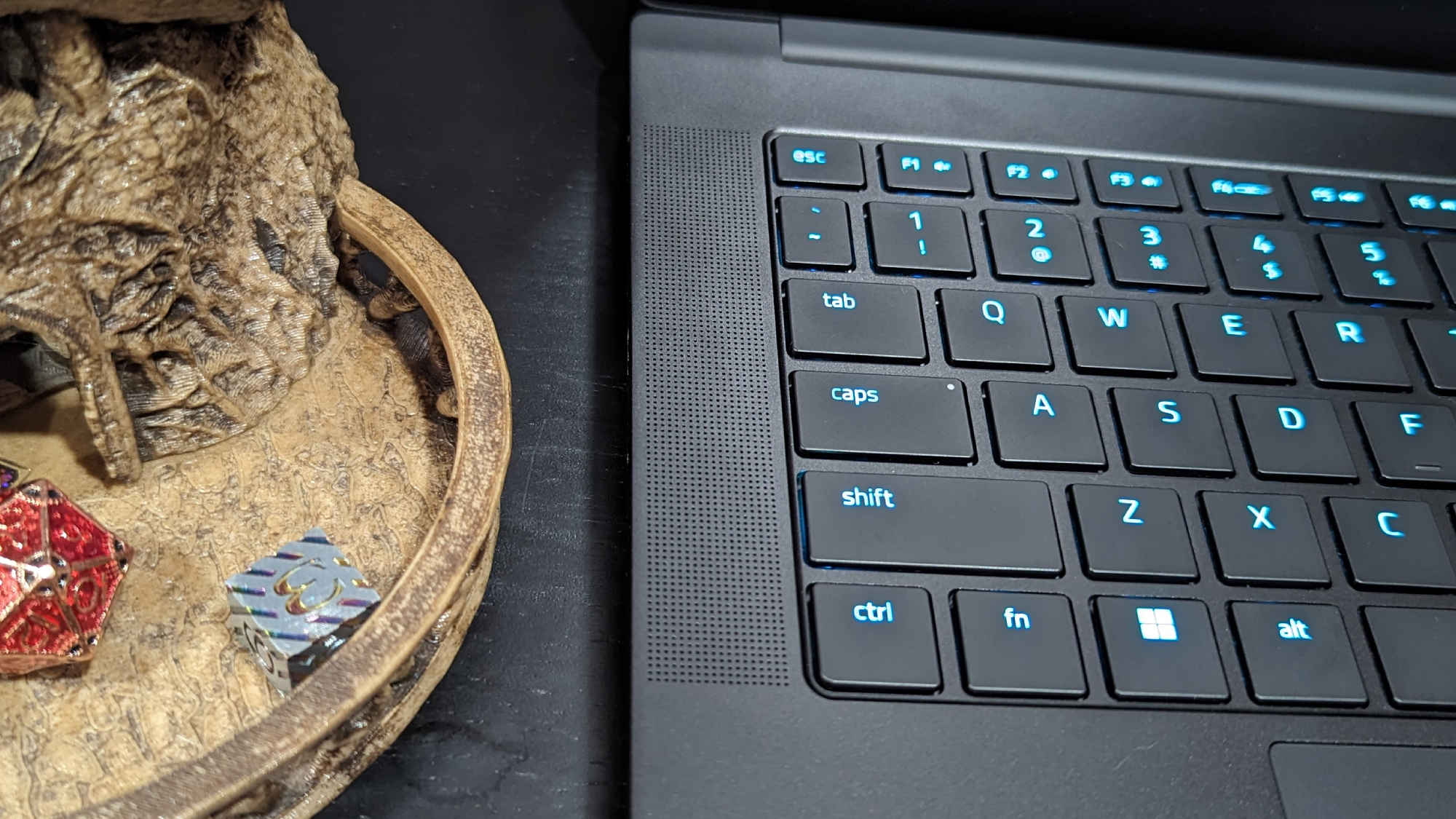
The Asus Zephyrus G14's top-firing and bottom-firing speakers were bombastic, like gaming on a TV in a different room instead of riding that line between reality and immersion. Conversely, the Razer Blade 14's front-firing speakers delivered punchy audio that made us feel like we were in the thick of it, whether it was a boss arena in Elden Ring or a Death Cab for Cutie concert.
If you aren't considering audio as part of the purchase, check out our best gaming headsets page. Otherwise, you can't beat Razer's speakers.
Winner: Razer Blade 14
Asus Zephyrus G14 vs. Razer Blade 14: Graphics
This is a bit of an unfair fight — the Zephyrus G14 is packed with an Nvidia GeForce RTX 4060 8GB GPU, while the Razer Blade 14 sports an RTX 4070 8GB GPU. Let's see how far the gap extends.
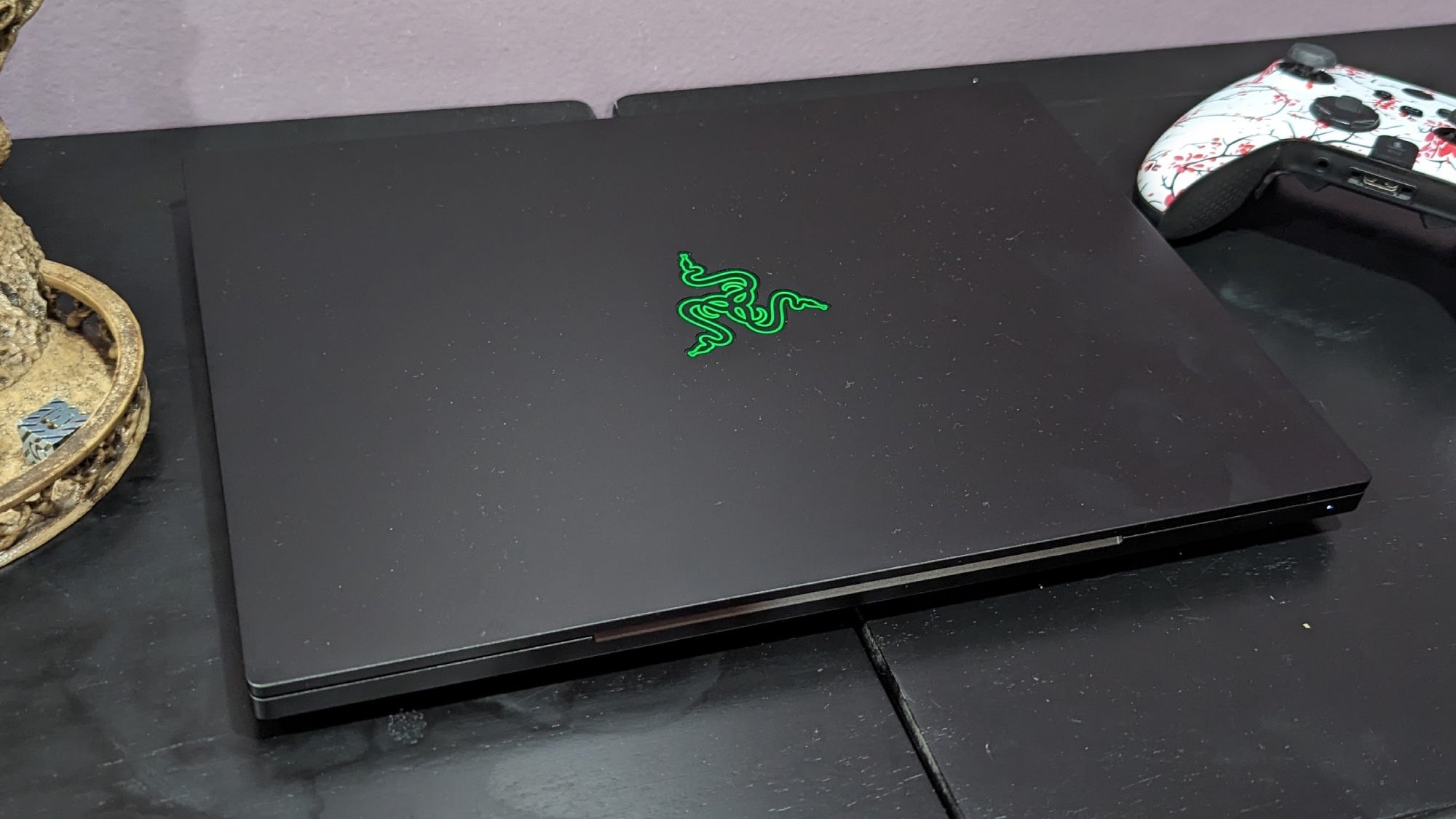
On the Far Cry 6 benchmark (Ultra, 1080p), the Zephyrus G14 hit 69 frames per second, and the Blade 14 led with 85 fps. At their native resolutions, the G14 averaged 46 fps, and the Blade 14 managed 68 fps.
The Zephyrus G14 got 67 fps on the Borderlands 3 benchmark (Badass, 1080p), which fell short against the Blade 14 (98 fps). At native resolutions, the G14 and Blade 14 scored 37 fps and 64 fps, respectively.
On the Red Dead Redemption 2 benchmark (Medium, 1080p), the G14 averaged 53 fps while the Blade 14 rode on at 73 fps. Natively, the G14 reached 27 fps — which is unplayable (under 30 fps), but the Blade 14 achieved 45 fps.
Both machines jumped on the Grand Theft Auto V benchmark (High, 1080p), and the Zephyrus G14 hit 84 fps while the Blade 14 scaled up to 100 fps. At their native resolutions, the G14 averaged 38 fps, and the Blade 14 got 55 fps.
Across the board, the Razer Blade 14 wiped the Zephyrus G14, which makes its sharper screen tough to justify unless the rest of the graphics are turned way down. However, if you want to even the playing field, we recommend spending some extra coin for the Zephyrus' RTX 4070 GPU.
Winner: Razer Blade 14
Asus Zephyrus G14 vs. Razer Blade 14: Performance
Converse to the graphics situation, the Asus Zephyrus G14 sports the new, faster AMD Ryzen 9 8945HS CPU, while the Razer Blade 14 offers last-gen's AMD Ryzen 9 7940HS processor. However, they're paired with 16GB of RAM and a 1TB SSD.

On the Geekbench 6.1 overall performance test, the Asus ROG Zephyrus G14 scored 12,246, while the Razer Blade 14 fell negligibly behind at 11,881.
When the machines transcoded a 4K video to 1080p on our HandBrake benchmark, the Zephyrus G14 completed it in 4 minutes and 21 seconds, while the Blade 14 finished in 4:45.
The Zephyrus G14’s 1TB SSD clocked a transfer rate of 1,289 megabytes per second, incrementally faster than the Blade 14’s 1TB SSD (1,230 MBps).
While the Asus Zephyrus G14 won all of our benchmark testing here, it did so with thin margins. You're not sacrificing much if you go with the Razer Blade 14, but the Zephyrus G14 is faster.
Winner: Asus Zephyrus G14
Asus Zephyrus G14 vs. Razer Blade 14: Battery life
Typically, this section would be pitiful. But the Asus Zephyrus G14 and Razer Blade 14 are the exceptions regarding battery life in gaming laptops.
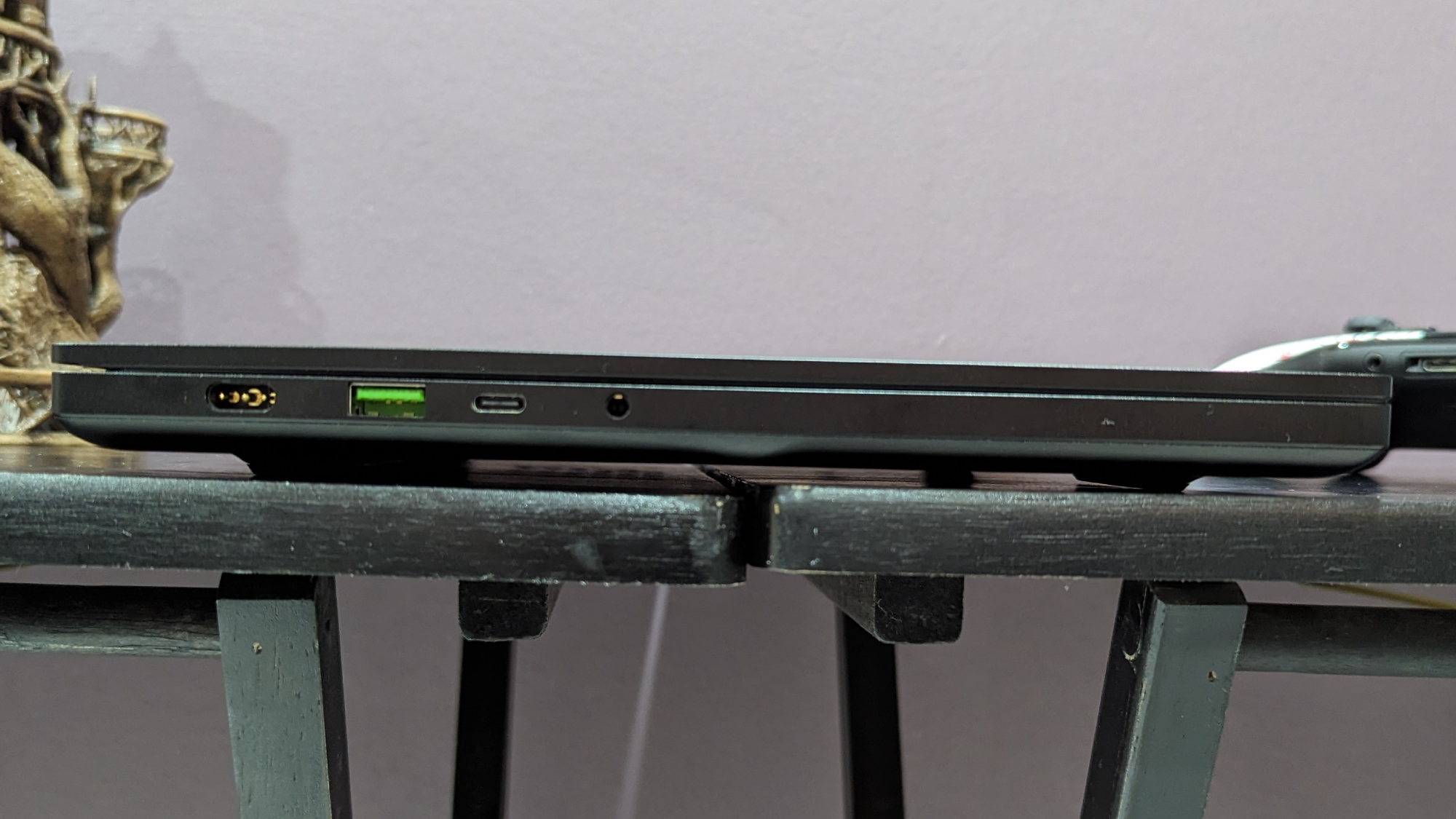
The Asus ROG Zephyrus G14 powered through 8 hours and 16 minutes on the Laptop Mag battery test, which is just 18 minutes shorter than the Razer Blade 14 at 8:34.
However, when gaming, the Zephyrus G14 lasted 1:03, whereas the Blade managed 1:46. That's a bigger difference if you're trying to squeeze in a little gaming here and there, but I still advise against playing games while unplugged, as it reduces performance.
Winner: Razer Blade 14
Overall winner: Razer Blade 14
One looks like a razor, and one is a Razer — only one survived the clash of blades. Naturally, it was the Razer Blade 14. You probably pieced that together when you saw that the Asus Zephyrus G14 scored 4 out of 5 stars and the Blade 14 scored 4½ plus an Editor's Choice award.
The Razer Blade 14 boasts stronger graphics performance because of its RTX 4070, but it didn't just win on a technicality. Razer pumped this machine with a killer display, quality audio, and long battery life. That pushes it well beyond the average gaming laptop.
However, the Asus Zephyrus G14 is a perfectly viable choice. Its ultraportable design and stronger CPU bundled at a cheaper price can't be beat. You can always opt for the RTX 4070 if you're looking for better performance. Don't count that gorgeous OLED display out, either.
If you can afford it, the Razer Blade 14 is the obvious winner. It's the premium choice for a reason—quality parts. If you're worried about the last-gen CPU performance, you can always wait for our review of the current model with the latest AMD Ryzen 9 8945HS CPU. But it probably won't change this result.
Winner: Razer Blade 14

Rami Tabari is the Reviews Editor for Laptop Mag. He reviews every shape and form of a laptop as well as all sorts of cool tech. You can find him sitting at his desk surrounded by a hoarder's dream of laptops, and when he navigates his way out to civilization, you can catch him watching really bad anime or playing some kind of painfully difficult game. He’s the best at every game and he just doesn’t lose. That’s why you’ll occasionally catch his byline attached to the latest Souls-like challenge.
